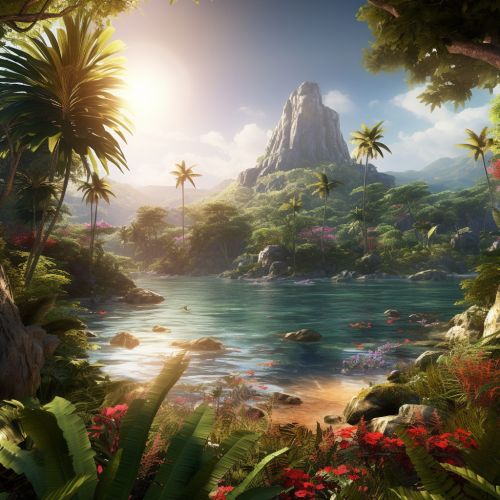Adaptive Radiation in Island Ecosystems
Introduction
Adaptive radiation is a process in which organisms diversify rapidly from an ancestral species into a multitude of new forms, particularly when a change in the environment makes new resources available, creates new challenges, or opens new environmental niches. This process is most noticeable in island ecosystems, where isolation and unique environmental factors often lead to a high degree of endemism.


Adaptive Radiation
Adaptive radiation is a key principle in evolutionary biology. It is a process that involves the rapid expansion and diversification of a group of organisms as they adapt to different ecological niches. This process often occurs when a new environmental area is colonized by a species. The species then diversifies into a variety of new species, each adapted to a specific niche within the new environment.
Island Ecosystems
Island ecosystems are unique environments that often contain a high degree of biodiversity. These ecosystems are often isolated from mainland ecosystems, which leads to unique evolutionary pressures and opportunities. Island ecosystems are often characterized by a high degree of endemism, where species are found nowhere else in the world. This high degree of endemism is often a result of adaptive radiation.
Adaptive Radiation in Island Ecosystems
Adaptive radiation in island ecosystems is a well-documented phenomenon. The isolation and unique environmental pressures of islands often lead to rapid speciation and the development of unique species. This process is driven by the availability of new niches and resources, as well as the lack of competition from mainland species.
One of the most famous examples of adaptive radiation in island ecosystems is the finches of the Galapagos Islands. These birds, studied by Charles Darwin, evolved from a single ancestral species into a variety of species, each adapted to a specific niche. Other examples include the honeycreepers of Hawaii, and the fruit flies of Hawaii.
Factors Influencing Adaptive Radiation in Island Ecosystems
Several factors influence the process of adaptive radiation in island ecosystems. These include the size and isolation of the island, the availability of resources, and the presence or absence of predators and competitors.
Size and Isolation
The size and isolation of an island can greatly influence the process of adaptive radiation. Larger islands, for example, often have a greater variety of habitats and resources, which can lead to a greater diversity of species. Similarly, more isolated islands may have fewer mainland species, which can reduce competition and allow for greater diversification.
Resource Availability
The availability of resources can also influence the process of adaptive radiation. In environments where resources are limited, species may evolve to exploit different resources, leading to diversification. Conversely, in environments where resources are abundant, there may be less pressure to diversify.
Predators and Competitors
The presence or absence of predators and competitors can also influence the process of adaptive radiation. In environments where predators and competitors are absent, species may have more opportunities to diversify and adapt to different niches.
Conclusion
Adaptive radiation in island ecosystems is a fascinating and complex process. It is a key mechanism in the evolution of biodiversity and provides a unique insight into the processes of evolution and speciation. Understanding this process can help us to conserve and protect the unique and diverse species that inhabit our planet's island ecosystems.
